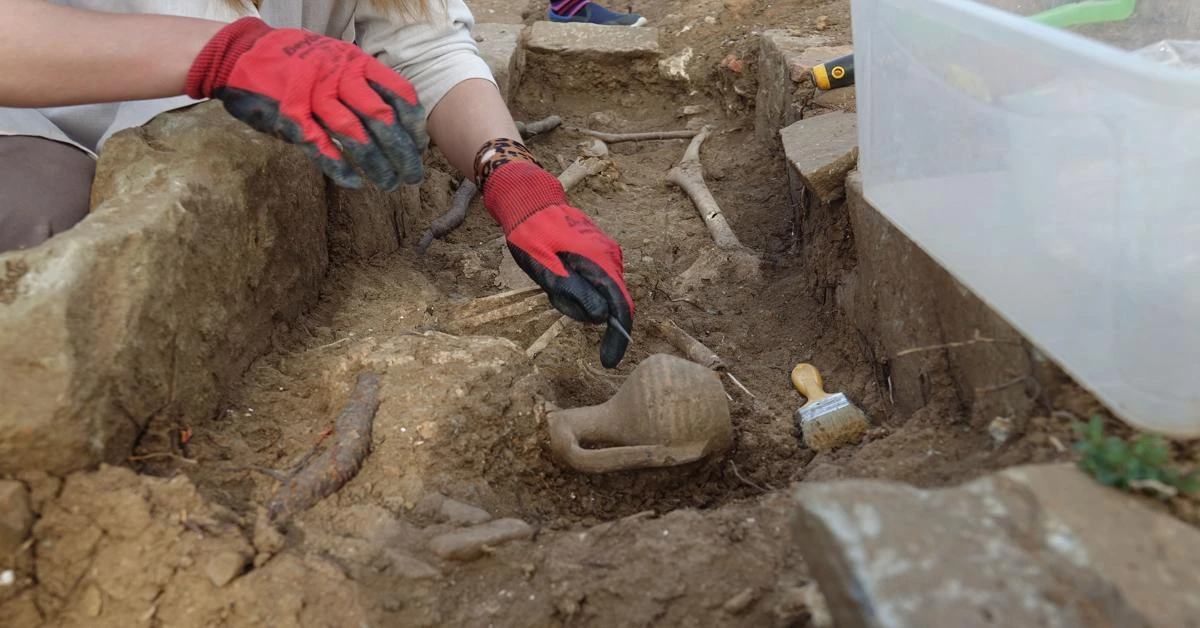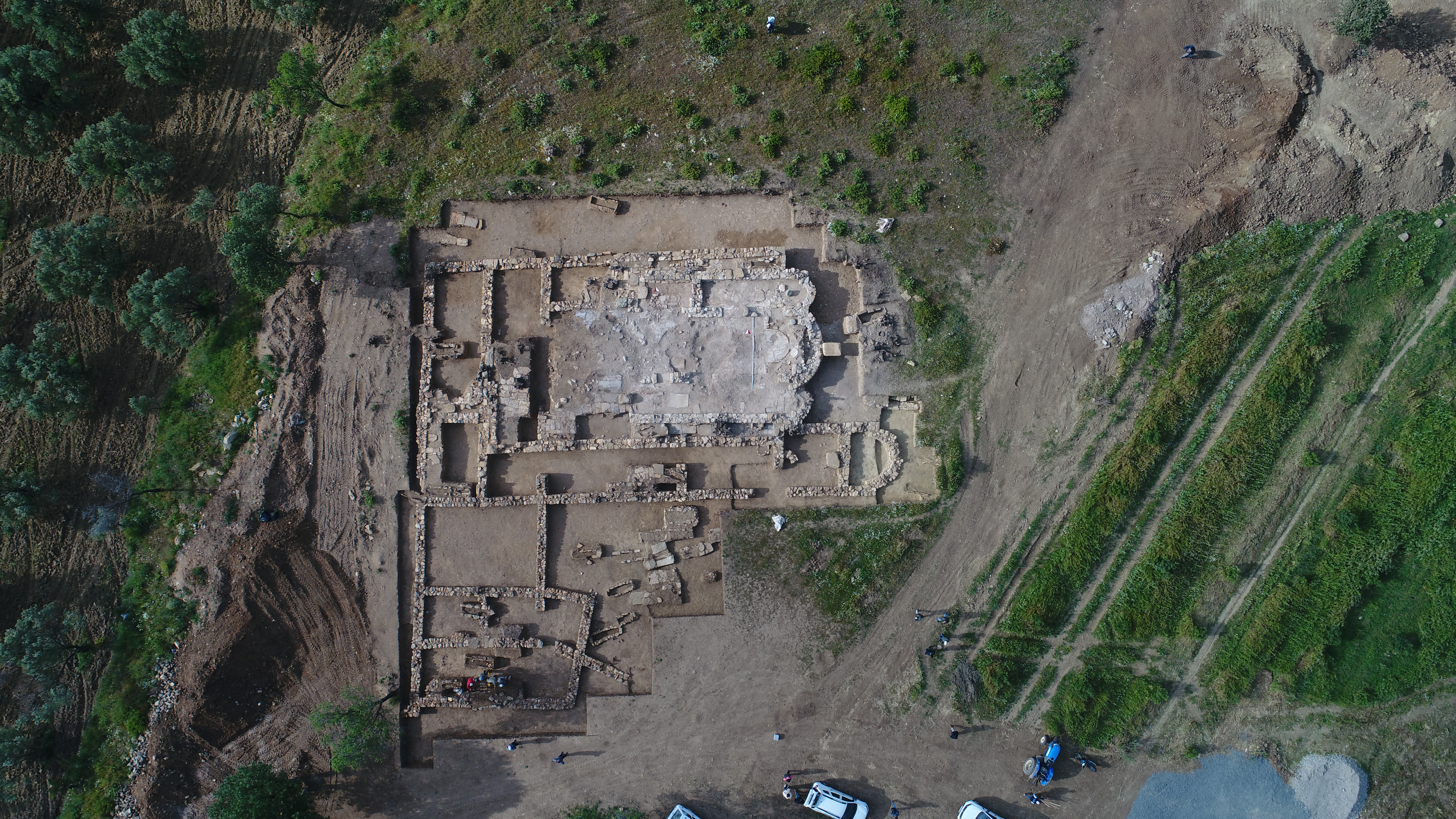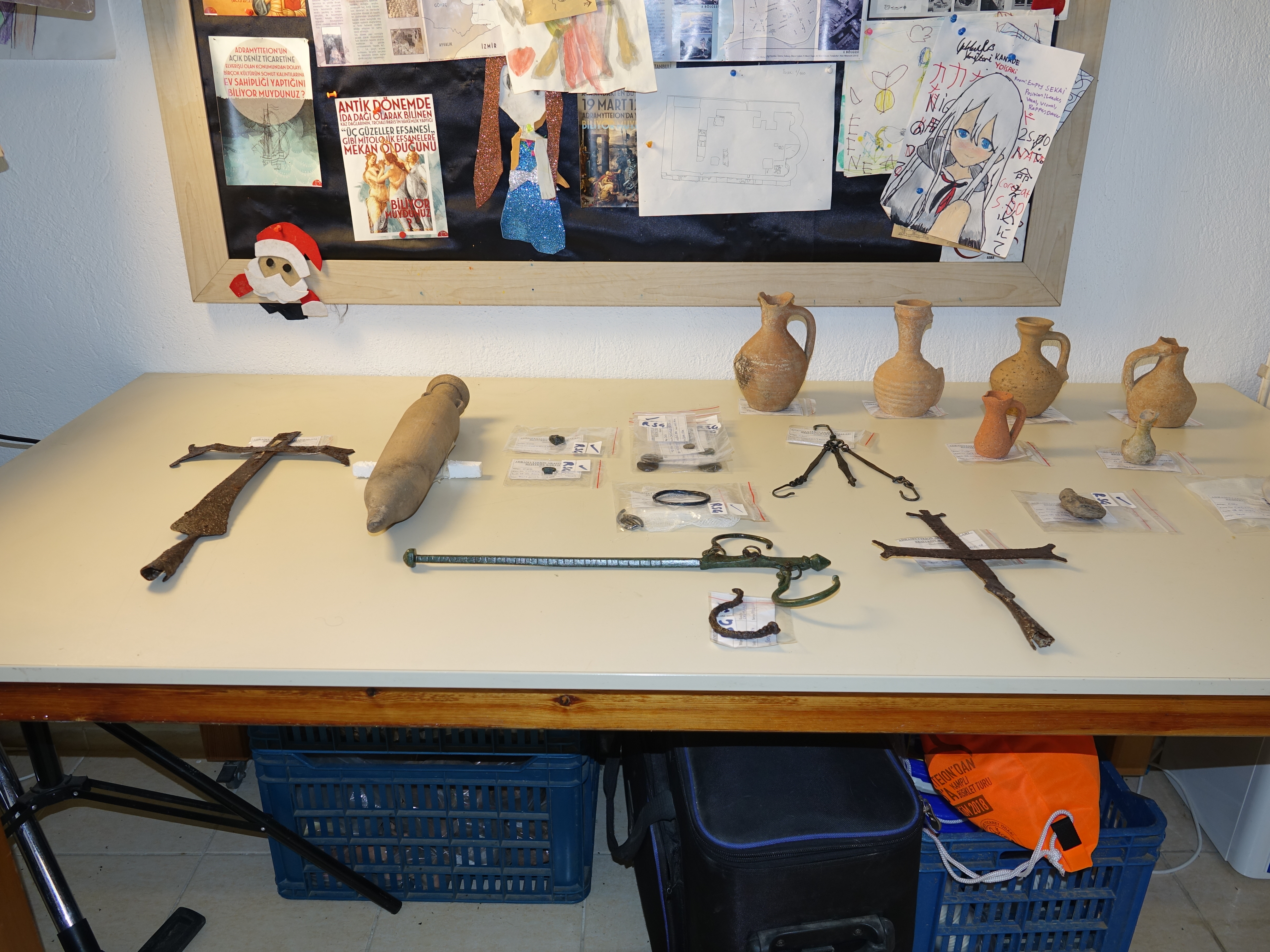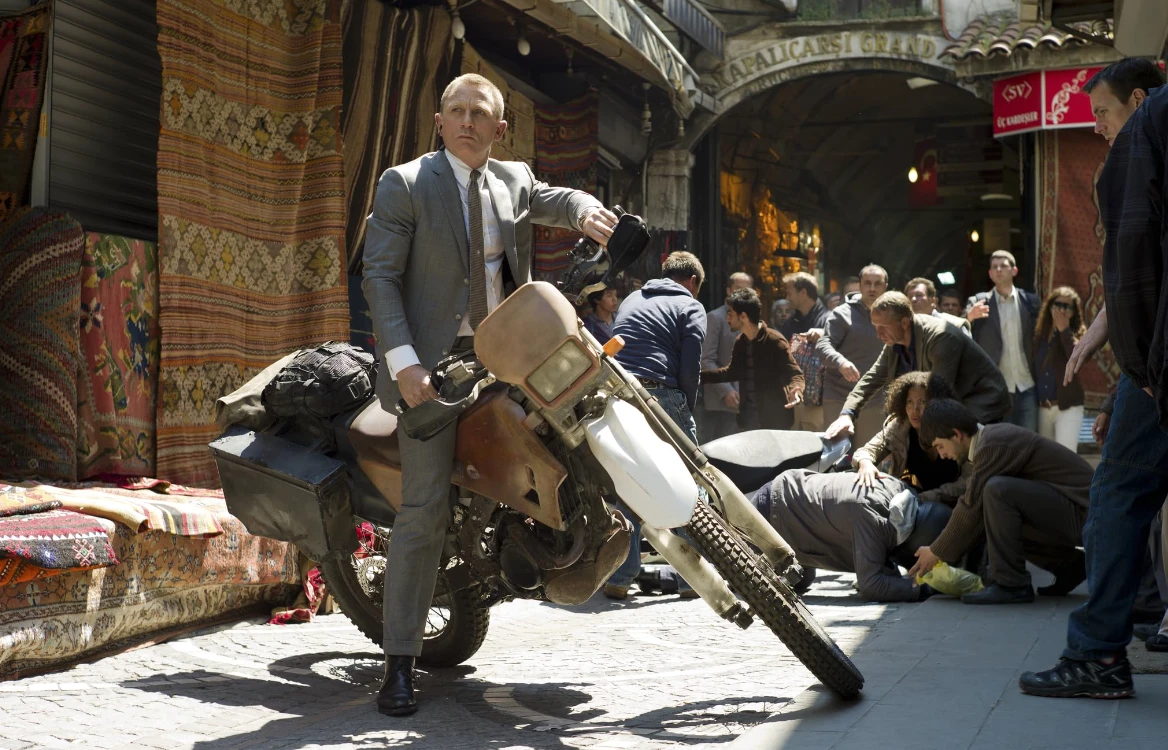Roman-era structures unearthed in Balikesir dam site excavations

Exciting discoveries of Roman-era structures, including a church, baptistery and more, emerge from rescue excavations at the Resitkoy Dam site in Balikesir, shedding light on the region’s rich history
Archaeologists working near the future Resitkoy Dam in Balikesir’s Burhaniye district have unearthed a trove of artifacts from the ancient city of Adramytteion.
A nine-month excavation yielded significant finds, including a church, a baptistery, tombs, agricultural storage facilities, and even ceramic kilns. These discoveries offer a fascinating glimpse into the daily life and industries of this historical city.
This salvage excavation, conducted by the General Directorate of State Hydraulic Works, aimed to preserve these ruins before they were submerged by the new dam’s reservoir.

During initial surface surveys conducted in 2015-2016 for the construction of the dam south of the ancient city of Adramytteion, archaeologists identified the remains of a Late Antique Period settlement in the Cingentarla location.
An exciting discovery was made during the nine-month excavation project overseen by the Balikesir Kuva-yi Milliye Museum Directorate. Archaeologists unearthed an ancient settlement dating back to the Late Roman period, spanning the 4th to 7th centuries AD.
The teams came across a two-stage church, baptistery, environmental graves, rock-carved tombs, storage spaces for agricultural production, a high-capacity wine workshop and a ceramic kiln.
The unearthed artifacts will be exhibited at the Balikesir Kuva-yi Milliye Museum.

Huseyin Murat Ozgen, a faculty member at Mimar Sinan Fine Arts University, department of archaeology, who is also heading the Adramytteion Research, told Anadolu Agency reporter that the largest and earliest 15-meter wide, 25-meter tall church known so far in the Edremit Gulf region was found in this region in rural areas where agricultural activities were carried out during the transition to monotheistic religion in Late Antiquity and the early Byzantine period.
Ozgen revealed the location falls within the territory of the ancient city of Adramytteion, also known as “Edremittene” which named the nearby gulf. He noted the unearthed settlement includes roughly 60 tombs, many containing multiple burials. Additionally, commercial spaces likely connected to agriculture were found surrounding a church structure complete with a baptistery.

Structures from early Ottoman period
Ozgen said that among the new findings, a wine workshop with a very large capacity was preserved as a cistern with an accumulation basin and a profiled cistern for settling the sediment at the bottom.
Ozgen also noted the discovery of a ceramic workshop and rock-cut tombs on the settlement’s northern side, likely due to the natural deformation of the hill. Interestingly, the excavation team also unearthed an area within the vicinity exhibiting characteristics of both the Late Byzantine and Early Ottoman periods.

Stating that Resitkoy was abandoned in the 1970s, but there are remains of an older village settlement and mills recorded in the Ottoman salnames, Ozgen said, “Therefore, by documenting the concrete findings that convey the cultural process here in a multidimensional way, we are making our best efforts together with the Museum Directorate without losing data within the history of the region.”
Filiz Gurbuga, the archaeologist representing the museum directorate during the excavation, emphasized that the Balikesir Regional Board for the Protection of Cultural Assets has already identified and documented the specific area that will be submerged by the water reservoir of the dam currently under construction.
Source: Newsroom



